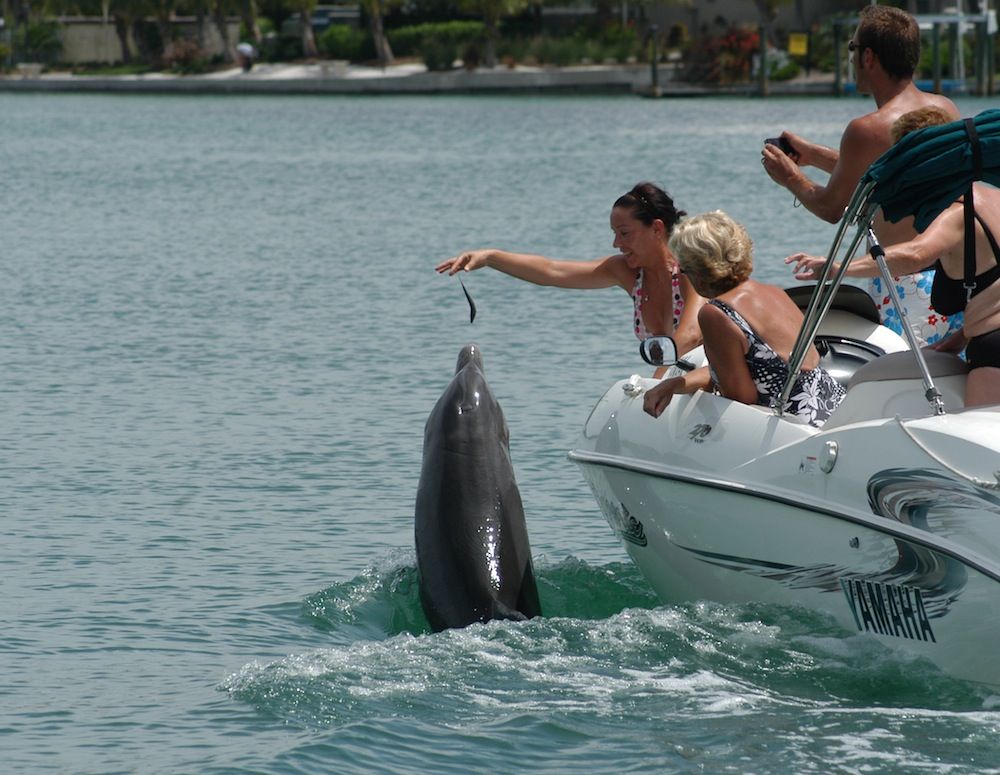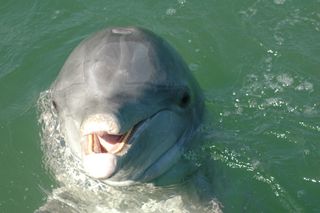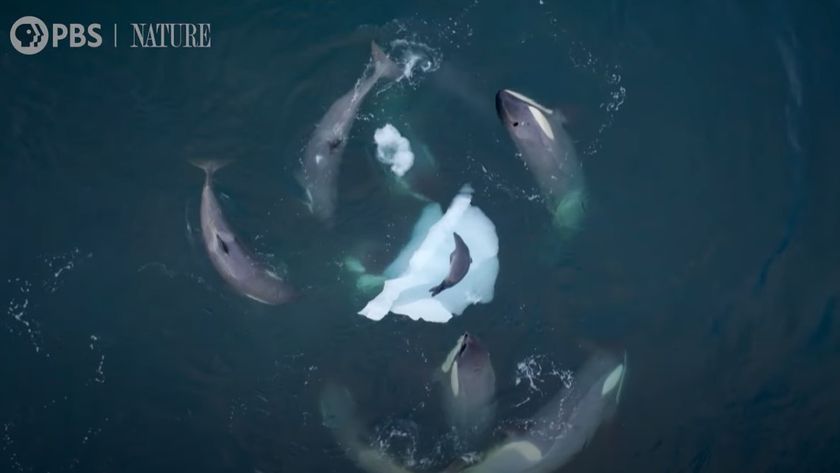Famous Begging Dolphin Found Dead

A dolphin known as "Beggar" for his tendency to approach boaters for food has been found dead, possibly as a result of his poor diet.
Beggar was found floating in the water near Albee Road Bridge on the Intracoastal Waterway in Sarasota, Fla., on Friday (Sept 21). His body was partially decomposed, making it impossible to determine the exact cause of death. However, the dolphin's digestive tract contained fishing hooks, squid beaks (not usual prey for dolphins in the area) and ulcers, suggesting that humans may have contributed to his demise.
According to the Mote Marine Laboratory, for the past 20 years, Beggar has been hanging out in the area where he was found dead. He was known to approach boats looking for food. During 100 hours of observations over several months in 2011, researchers with the Sarasota Dolphin Research Program observed Beggar interacting with humans 3,600 times. People tried 169 times to feed Beggar an impressive range of 520 foods, including beer and hot dogs. On 121 occasions, boaters tried to pet the dolphin. Nine times, they were bitten for their efforts.
Over the years, the dolphin became a poster child for why feeding marine wildlife is illegal. The behavior put Beggar at risk of getting hit by a boat, Mote reported, and other dolphins seemed to learn his bad behavior by watching him. [Gallery: A Dolphin Success Story]

It is illegal under the Marine Mammal Protection Act to feed or pet wild dolphins. Punishments include up to $100,000 in fines and up to one year in jail per violation.
The Sarasota County Marine Patrol brought Beggar's body in for a necropsy (animal autopsy) at Mote. Scientists found the dolphin had been struck by boats in the past; he had healed boat scars on his dorsal fin as well as several healed puncture wounds on his fins and body. He also had multiple broken ribs and vertebrae.
Beggar had not eaten much before death. Dolphin stomachs are made up of three compartments. In Beggar's first stomach compartment were three fishing hooks and fragments of fishing line. In his third stomach compartment, researchers found the squid beaks, suggesting human feeding with fishing bait, and several ulcers. Beggar was also dehydrated, possibly because of his skewed diet, Mote reported. Two old stingray barbs were also embedded in Beggar's flesh.
Sign up for the Live Science daily newsletter now
Get the world’s most fascinating discoveries delivered straight to your inbox.
"We can't say which of these many injuries was the ultimate cause of death for Beggar," Gretchen Lovewell, the manager of Mote's Stranding Investigations Program, said in a statement. "But all of our findings indicate that he was in poor health for a long time and that his interactions with humans played a role. Boat strike wounds, fishing hooks and line in his stomach — even the squid beaks we found — all of these things indicate that he was spending more time attempting to get food from humans than foraging on his own."
Follow Stephanie Pappas on Twitter @sipappas or LiveScience @livescience. We're also on Facebook & Google+.

Stephanie Pappas is a contributing writer for Live Science, covering topics ranging from geoscience to archaeology to the human brain and behavior. She was previously a senior writer for Live Science but is now a freelancer based in Denver, Colorado, and regularly contributes to Scientific American and The Monitor, the monthly magazine of the American Psychological Association. Stephanie received a bachelor's degree in psychology from the University of South Carolina and a graduate certificate in science communication from the University of California, Santa Cruz.











